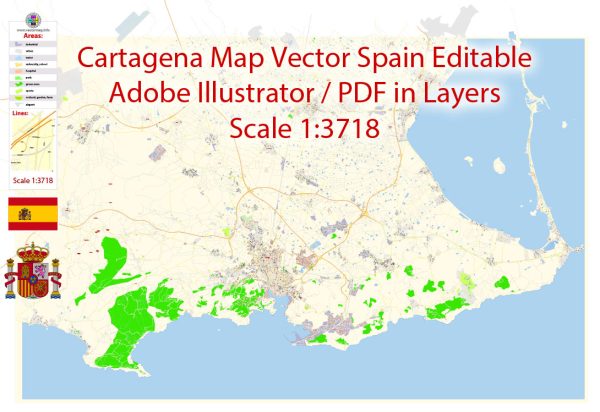Cartagena is a historic city located in the southeastern region of Spain, in the autonomous community of the Region of Murcia. Its history dates back to antiquity, and it has been an important center of maritime trade, military significance, and cultural development for over two millennia. Here is a brief overview of the history and description of Cartagena, Spain:
- Ancient Origins: Cartagena was originally founded by the Carthaginians around 227 BC and was named “Qart Hadasht,” which means “New Town.” It served as an important Carthaginian trading and naval base during the Punic Wars.
- Roman Era: The city was captured by the Romans in 209 BC and became known as “Carthago Nova.” Under Roman rule, Cartagena prospered and became a significant Roman port city, known for its mineral wealth, including silver and lead mining. Many archaeological remains from this period, such as the Roman Theater, still stand today.
- Visigothic and Moorish Rule: After the fall of the Western Roman Empire, Cartagena went through periods of Visigothic and Moorish rule, which contributed to the city’s cultural heritage.
- Reconquista: In the 13th century, Cartagena was reconquered by King Alfonso X of Castile. The city was subsequently fortified and played a crucial role in defending the region from pirate attacks.
- Naval History: Throughout its history, Cartagena has been a significant naval and military center, particularly during the Spanish Golden Age. It was home to the Arsenal of Cartagena, a major shipyard and naval base, which played a pivotal role in Spain’s naval power.
- Modern Era: In the 19th century, Cartagena was the site of several important historical events, including the 1873 Cartagena Uprising, which led to the establishment of a short-lived federal republic.
- Contemporary Cartagena: Today, Cartagena is a vibrant city that seamlessly blends its rich history with modern amenities. Visitors can explore its well-preserved historical sites, including the Roman Theater, the Old Town with its winding streets and squares, and various museums dedicated to the city’s maritime and military history.
- Industry and Tourism: In addition to its historical significance, Cartagena is an industrial and commercial hub with a major port. It’s also a popular tourist destination, attracting visitors with its coastal attractions, including beaches, as well as its vibrant cultural scene, festivals, and local cuisine.
- Cultural Heritage: Cartagena’s historical and architectural heritage, influenced by various civilizations, makes it a captivating destination for history enthusiasts. The city’s museums, festivals, and cultural events celebrate its diverse past.
Overall, Cartagena, Spain, is a city with a rich history, and its historical sites and cultural legacy continue to draw tourists and scholars interested in exploring the layers of its past.


 Author: Kirill Shrayber, Ph.D.
Author: Kirill Shrayber, Ph.D.